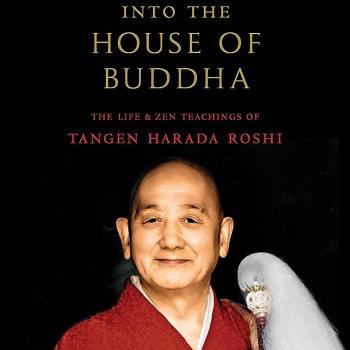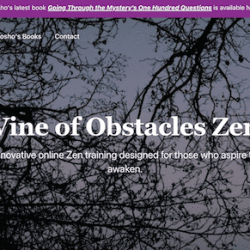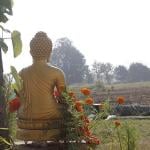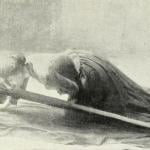 Note: This is the second of a series that I call my koan confessions. It is a “coming out” of sorts in that I share my views about just-sitting Zen and koan Zen (labels I prefer to Rinzai and Soto because there’s so much variation within Rinzai and Soto that the terms don’t distinguish sufficiently).
Note: This is the second of a series that I call my koan confessions. It is a “coming out” of sorts in that I share my views about just-sitting Zen and koan Zen (labels I prefer to Rinzai and Soto because there’s so much variation within Rinzai and Soto that the terms don’t distinguish sufficiently).
Specifically, I’m taking a stand in favor of kensho – something that is frowned upon these days in many just-sitting lineages. I confess that this is the most controversial of my confessions.
This and other views expressed here may be familiar to regular readers, so please forgive the redundancy and drama. #2 starts off where #1 left off so it’ll make the most sense if you read #1, “No,” first. It can be found by scrolling to the previous post or clicking here.
Comments are welcome.
Confession #2: Yes, kensho is an important moment in the Zen-life process.
Kensho is actualizing the fundamental point and is neither ugly nor evil. Koan Zen insists on kensho as the pre-requisite for the practice-enlightenment life project. If we haven’t even tasted the appetizer, what is it that we’ll actualize? Might just be practicing delusion.
Further, to enact zazen as the ritual of enlightenment, as is vogue these days in some just-sitting circles, is fine – “You are making the initial, partial excursions about the frontiers, but are still somewhat deficient in the vital path of total emancipation,” as Dogen said.
And despite his current reputation, I believe that Katagiri Roshi would agree (if that matters to you). In Returning to Silence, p.108 (yes, like in the number of delusions), he says, “The experience of enlightenment is important for us, but it is not enough. Again and again that enlightenment must become more profound, until it penetrates our skin, muscle, and bone.”
Koan introspection begins with the student taking up a breakthrough koan and then making the breakthrough more and more profound.
Most commonly the first koan is the Mu koan (“Does a dog have buddha nature?” “Mu” or “No”). “What is the sound of the single hand?” Or “Who hears?” also do nicely.
Some students work for years on this first koan. Often this work is frustrating, humiliating and exasperating as our old issues come into play. “I’m not good enough.” “I’m not smart enough.” “I’m not dedicated enough.” “Zen sucks.”
One sincere student studying Mu recently related a conversation to me that he’d had with his wife. He was unhappy with her lack of support for his koan work, “You don’t understand how difficult it is not to get this,” he’d told her, hoping for sympathy. She was not moved.
But my student was right. It is difficult not to get it. It takes quite a strain to not get mu and that strain often boils into a crisis, upsetting a stable and numb life. And that’s part of the point. The simple question, “What is Mu?” can send a Mu student running from the room.
While avoiding Mu, most of us try to understand koans intellectually. Fortunately, though, that won’t do. If koans were simply about speculative thinking, then koan Zen would have little to offer and it would have been wiped off the face of the earth long ago.
Another avoidance tactic is to use metaphorical thinking as if mu koan was a piece of literature to unpack. Fortunately, though, koans are essentially not metaphors. On the other hand, koans also are not about belittling thinking. Understanding helps contextualize this work. However, if we are to satisfy our hunger through Zen practice, something much more intimate and powerful than philosophical understanding or metaphorical thinking is necessary.
If our usual way of resolving problems is not sufficient, what is?
Confession #3: There is no recipe.
One of the virtues of koan introspection is how it calls for us to be creative and free – within the context of the koan at hand.
In my own koan work, lots of zazen has been essential. Sometimes I focus on the key parts of a koan in zazen. Sometimes the koan seems to have a life of it’s own, a virus in the software, and bubbles up from my belly without effort or contrivance. Sometimes I sleep with the koan, calling the koan to heart just as I’m falling to sleep or I roll around with it in the middle of a middle-age sleepless night.
For some people, in the heat of a crisis, mu has become a single word prayer and suddenly the separate world collapses and mu becomes radiantly clear.
In my case, I struggled (on and off and on again with a couple different teachers) with mu for ten years. Then late one night during sesshin, in the heart of silence, a truck came roaring up the road and around the bend about a quarter mile from the monastery. Mu did me and was suddenly vividly clear. I went to the teacher during the next morning’s dokusan, did the customary bows, leapt into seiza and presented mu. He smiled and then calmly started the checking questions. I passed through several but they got funnier and funnier and finally I burst into laughter. In my exhilaration, the whole checking thing seemed hilarious.
After I sobered up, I came back to it.











